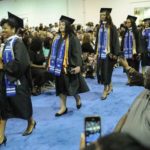A national disgrace becomes a national monument as more than 400 gather for pilgrimage to former concentration campBy Susie Ling, Special to IMDiversity.com Asian-American Village
On the eve of Independence Day, Tule Lake made the transition from national disgrace to national park. On this weekend, over 400 people attend the 17th Tule Lake Pilgrimage – the first to celebrate Tule Lake’s new designation as the Tule Lake Unit of the World War II Valor in the Pacific National Monument. Among the attendees are fifty pilgrims that are now over 80 years of age. Three are over 90. All are braving the heat, the wind, and the dust to witness the national monument dedication ceremony. Poet Hiroshi Kashiwagi was incarcerated here and describes Tule’s hot summers and dust storm’s “sand biting into your skin, filling your eyes and nose and mouth and ears…”[1] “When people visit this monument, they will learn the past doesn’t have to be repeated,” says Ren Lohoefener, regional director for the U.S. Fish and Wildlife Service’s Pacific Southwest Region, and one of the dedication speakers at the ceremony. National Park Service regional director Jon Jarvis says a goal of the new park will be to tell the concentration camp story. While national parks include places of beauty such as Yosemite, Jarvis notes that the nation has also “chosen to set aside places where there is sorrow and concern.” Sorrow and concern are among the many emotions that describe the Tule Lake experience. Tule Lake was the most notorious of the ten concentration camps established by the United States government during World War II to incarcerate Americans of Japanese ancestry. Tucked in the northeast corner of California, Tule Lake is where the FDR government housed the “troublemakers”. Of the 120,000 American internees, 18,000 were shuffled to the Tule Lake Segregation Center. This was a high security prison for families that were never charged or indicted of crimes. This was the camp where uniformed military guards with machine guns matched against mass demonstrations of up to 5,000 people. Tule Lake Relocation Center became Tule Lake Segregation Center after the 1943 Loyalty Questionnaire. In order to separate the “loyal” from the “disloyal”, War Relocation Authority established a questionnaire with these two critical questions for anyone over 17 already incarcerated in the concentration camps, already stripped of civil rights:
The questionnaire was a successful divide-and-conquer technique, pitting friends, neighbors, and even family members against each other. It left a community divided. Shig (few last names are used in this article) was a senior in San Pedro High when Pearl Harbor ignited the nation. He was born on Terminal Island where most of the fathers were Japanese fishers from Wakayama and most of the mothers worked in the canning industry. The men were suspected of spying because they owned fishing boats. The FBI arrested them quickly. Later, the authorities asked the remaining women and children to evacuate within forty-eight hours. At eighteen, Shig was one of the oldest males left on the island and helped many pack their belongings and move. Shig was part of the first group to go to the Manzanar camp; he was forced into a work crew that built irrigation canals, leveled fields, and put floors in the barracks. He didn’t spend much time thinking over the Loyalty Questionnaire; he was deeply angered by the United States government and answered “no” and “no” to Questions 27 and 28. That act of defiance got him transferred to Tule Lake. A later act of defiance got him jailed at Santa Fe Department of Justice internment camp. Shig, now 85 and still a serious sports lover, will tell you all about the crude golf course they built at Manzanar and he will tell you about his softball game with the Japanese Peruvians while at Santa Fe DOJ camp, but he has blocked almost all memory of Tule Lake in the 1940s. About 10 percent of the adult Japanese Americans were angered enough by the questions to either refuse to answer or to not answer the Loyalty Questionnaire with the expected response. Bill answered, “Yes, if you return my civil rights.” The government authorities sent him to Tule Lake as well.
Sumie was from Los Angeles; her husband ran a grocery store in Hollywood with his brother. They had two cute small children when they were sent to Jerome in Arkansas. Sumie didn’t like the Questionnaire either and her young family got sent to Tule Lake; she was pregnant. She died many years ago but her three boys are here at the Pilgrimage, including Tosh, who was one of 1,400 born in camp. There are so many, many stories. Some of the kids thought camp was fun. Richard said they played and played, although never with girls. He had no chores and plenty of friends who didn’t make fun of his ethnicity as they were also Japanese. They swam in the irrigation ditch, made trucks out of thread spools, and caught scorpions. Don, however, didn’t think it was fun. He felt the worries of the elders and to this day, feels uncomfortable in lines or when he is crowded. George remembers rice and potatoes at every meal with a little tsukemono made from watermelon rind. Jim said that at 15, he spent all his time with his gang and his family unit slowly deteriorated. Mori, now 88, came to the pilgrimage with his younger brother. All weekend, Mori hugged the suitcase he left Tule Lake with. It has his name and his family number 27175. He would go back to Gridley after the war and plant peaches and prunes. By the 1960s, they were known as the Kiwi Kings. There are 17 in their family here on this pilgrimage. Some are Kibei. Robert was four when he left camp. His parents were “renunciators “ who renounced their US citizenships and chose to migrate to war-torn Japan in 1946. They didn’t want to be Americans anymore and were considered “native American aliens”. Robert returned to his land of birth when he was 15. After college, he was drafted into Vietnam. Kazuki didn’t come. His parents took the family back to Hiroshima after the war and quickly realized it would be hard. Kazuki’s sisters were allowed to return to Los Angeles but being male, he had to stay behind until attorney Wayne Collins fought for civil rights of the renunciators in the 1950s. Sumie, then in Gardena, got her citizenship back in 1958 and steadily voted Republican; she remembered that FDR was a Democrat. When Sumie got her apology letter from George Bush, she framed it for her living room. Marion came back. She said, “my power went out when I was molested at ten years of age in camp”. More of her power was robbed when she worked seven years as a schoolgirl (live-in domestic servant) after the war while completing her education. More of her power was robbed when she worked two jobs for the salary of one. Perhaps she came on the Pilgrimage to demand some of her power back.
Pam and Ben returned. They are San Francisco Chinese and they first came to Tule Lake in 1974 with a group of mostly young activists from Berkeley and SF State. One of the buses broke down on that trip, but the local auto shop refused to service them. The group slept in sleeping bags while the locals and sheriffs drove by regularly that night – with shotguns. The young activists – like the Tule internees 30 years earlier – wouldn’t be intimidated. Pam said they also wanted to make a visible statement and chose to walk seven miles to the camp grounds. After 35 years working in the community, Ben and Pam came to their second Tule Lake pilgrimage. They met up with Stan who joined Asian Student Union at Berkeley in the 1970s; Stan has been to 17 Tule Lake pilgrimages. There have been many changes since Pam and Ben’s first visit to Tule Lake. In addition to the national monument status, there are signs of support surrounding the Pilgrimage. The First United Methodist Church of Redding invited all the attendees to lunch. The staff of the Oregon Institute of Technology at Klamath Falls welcomed the attendees to their dormitories and cafeteria. A local resident of the city of Tulelake found pieces of coal used by the Tule Lake camp residents, and shared them with all the elderly attendees at the Pilgrimage. A couple from nearby Klamath Falls came to celebrate their 4th of July with us and to learn. First the Japanese Americans didn’t want to be at Tule Lake. They now come back regularly. Most of the internees have passed on, but their stories will always be in the wind “biting into your skin.” For more information about the Tule Lake Pilgrimages, contact www.tulelake.org
Notes & Citations
Readings of Related Interest
Susie Ling is Associate Professor of Asian American studies at Pasadena City College in the San Gabriel Valley. She also lives in the San Gabriel Valley and is a member of the Chinese Historical Society of Southern California (www.chssc.org). Photos on this page by Susie Ling, and are used with permission. |
||||
|










